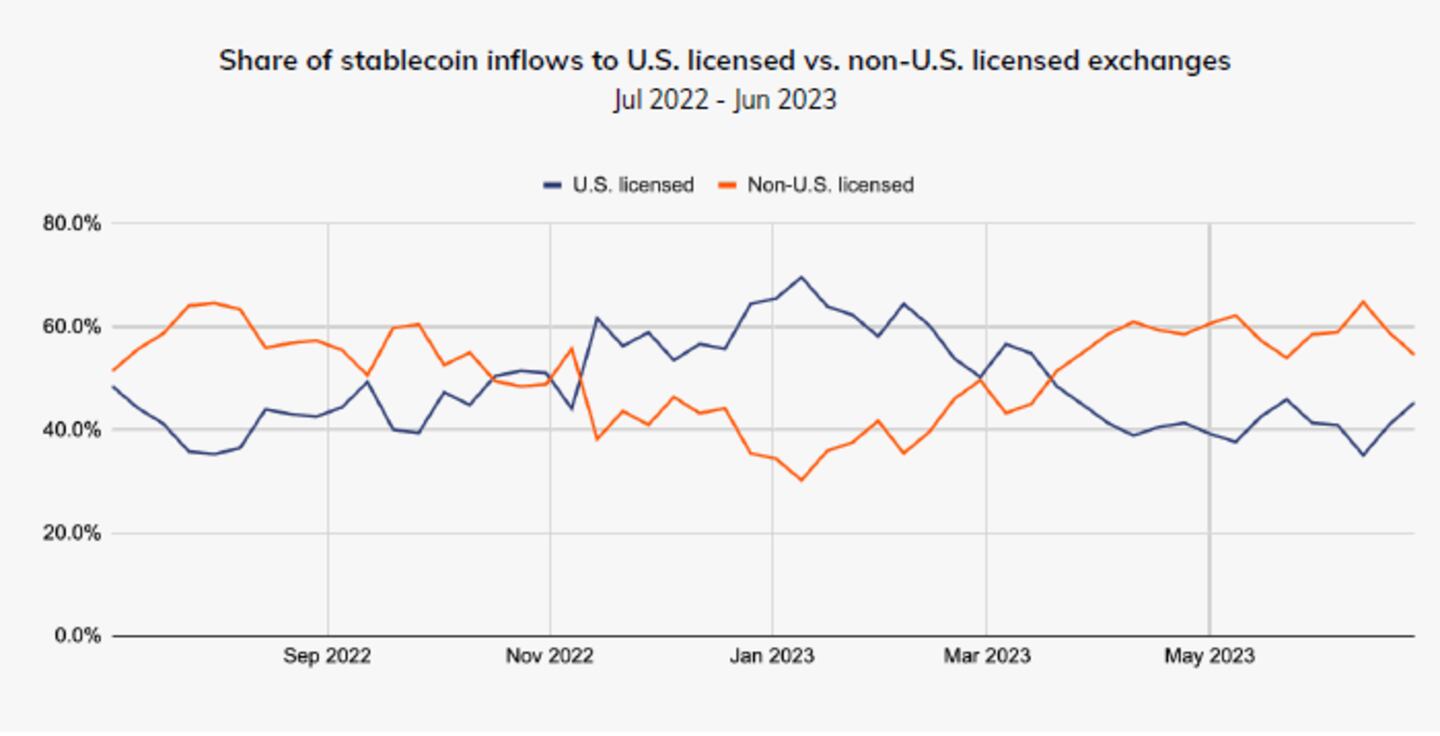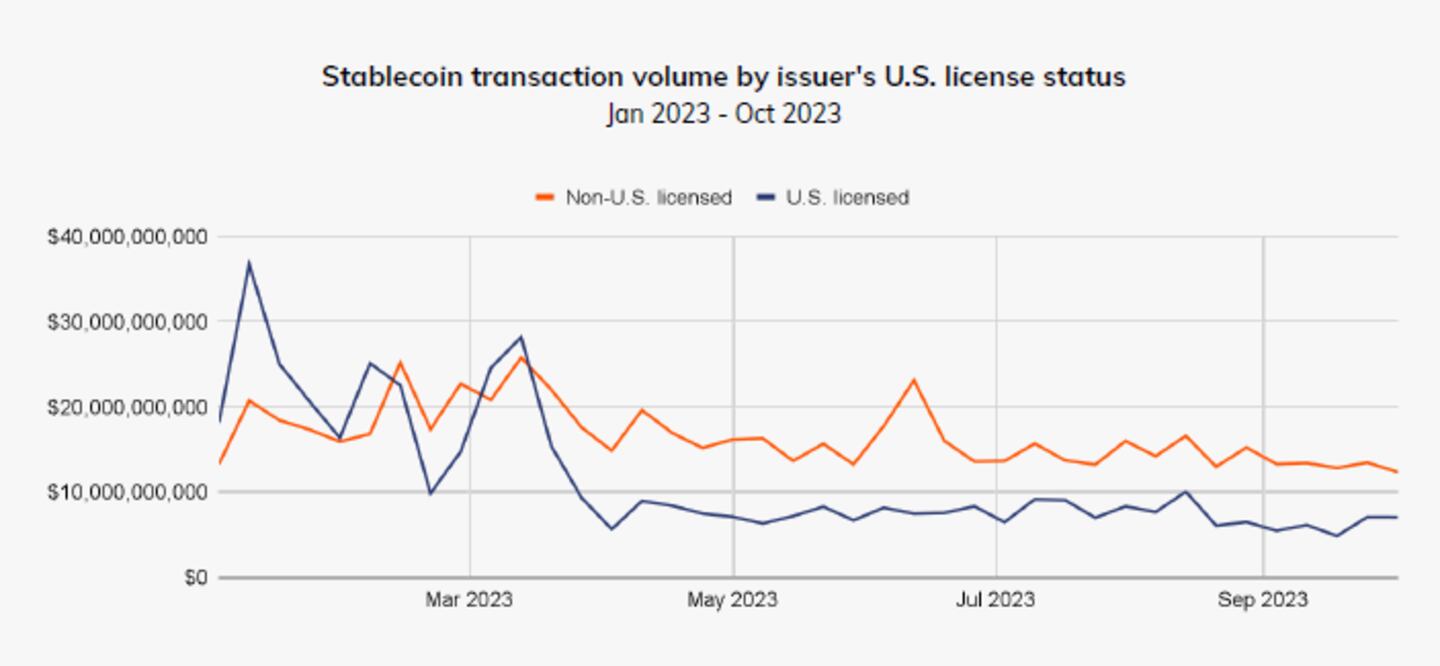- The US government is “increasingly losing its ability to conduct stablecoin oversight,” according to a new Chainalysis report.
- Stablecoin flows have shifted from US-based companies to ones outside of US jurisdiction, the report finds.
Happy Wednesday!
Stablecoins pegged to the US dollar account for 90% of the total stablecoin market share, but the coins themselves are flowing to companies based outside of the States, Chainalysis found in a new report.
Stablecoins are cryptocurrencies designed to stay at par with a government-issued currency, such as the US dollar or the euro.
Let’s dive into it.
Losing stablecoin oversight
The US is losing its regulatory oversight over the stablecoin market, Chainalysis says in a new 97-page research report published this week.
The blockchain forensics company found that the majority of stablecoin inflows have shifted from US licensed companies to non-US licensed ones since March.
As of June, 54.6% of stablecoin inflows to the 50 biggest crypto service providers went to non-US licensed exchanges.
“Though US entities originally helped legitimise and seed the stablecoin market, more crypto users are pursuing stablecoin-related activity with trading platforms and issuers headquartered abroad,” said the report.
“Unfortunately, this means the US government is increasingly losing its ability to conduct stablecoin oversight and US consumers are missing opportunities to engage with stablecoins with the safeguards provided by the US regulatory regime,” the report added.

This is despite the fact that more than 90% of stablecoin activity is due to coins pegged to the US dollar.
Non-US-issued stablecoins have seen higher transaction volumes than US-issued ones since March, Chainalysis noted.

The report said the US had a “strong interest” in maintaining regulatory authority over stablecoins “given the central role of USD-denominated reserves for these assets.”
US-based stablecoin issuer Circle briefly lost its dollar peg in March when it revealed that some of its reserves were stuck at Silicon Valley Bank, which experienced a bank run at the time.
It has lost market capitalisation ever since — from over $43 billion to around $25 billion, per CoinGecko.
Meanwhile rival Hong Kong-based stablecoin issuer Tether has seen its market capitalisation rise from around $72 billion to over $84 billion in the same period.
“While the shift away from stablecoins was already underway before the banking failures in March, it’s possible that investor concerns over stablecoins following that incident have played a role in its continuation,” said Chainalysis.
Market watchers and lawmakers have previously warned that US oversight over the stablecoin market is threatened by the country’s lack of well-considered crypto laws, something the Chainalysis report also noted
At the end of last Congress, it looked like a bipartisan bill had gained momentum.
However, Democratic Senator Maxine Waters has said that subsequent scandals — such as the Terra and FTX collapses — had rendered that bill obsolete, and that Congress should start from scratch.
A Republican version of the bill made it past the committee phase this summer, but the trial against disgraced FTX co-founder Sam Bankman-Fried, Republican infighting and the war in Israel have made meaningful crypto regulation being passed a far-away prospect.
Crypto market movers
- Bitcoin is down 1% in the last 24 hours and trading for $34,200
- Ethereum is down 3.3% in the same period of time, and changing hands for $1,790.
- Despite the market slump, Chainlink is up 7.2%.
What we’re reading
- EU may tap blockchain to overhaul bureaucracy throughout 27-nation bloc — DL News
- Why adoption of stablecoins and Bitcoin have surged 9% in Nigeria during bear market — DL News
- Elizabeth Warren’s anti-crypto crusade gains momentum — DL News
Tom Carreras is a Markets Correspondent at DL News. Got a tip? Reach out at tcarreras@dlnews.com
